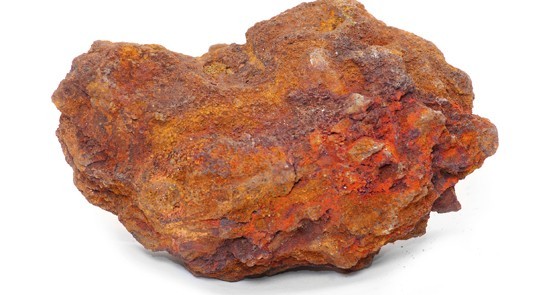
Excuse me, is it really 2011? Remember those days of iron ore at US$190 a tonne back in 2011? Clive Palmer was a hero (not nearly broke), Nathan Tinkler was a giant (and now broke), Twiggy Forrest was a giant (now diminished) and Gina Rinehart became the world’s richest woman. Are they coming back after iron ore prices surged 19% in a day yesterday to a new 2016 high? Oil hit US$40 a barrel overnight for the first time this year, and copper prices are up 17% since the multi-year lows of late 2015. Even thermal coal is going for a bit of a “run” (up a whole 2% in the past week). Gold has boomed, too, and share markets have soared, but iron ore is the focus — not unsurprisingly, given its dominance of Australian economic and business commentary. According to the two main global measures of the market for ore, the Steel Index and Metal Bulletin, the spot price jumped 19% yesterday to more than US$62 a tonne (Index) and more than US$63 a tonne (Bulletin). The reason? Well, if you can believe it, traders were “encouraged” by the forecasts for Chinese economic growth for 2016 of 6.5% to 7% and a budget deficit of 3% of GDP, or more than US$300 billion. Iron ore prices have risen 46% so far this year and are up 70% since hitting a record low of just over US$38 a tonne in December, and no one saw that coming. It’s no wonder Fortescue shares surged 24% yesterday and BHP shares have rebounded more than 34% since the lows earlier in the year, and shares in Arrium, the struggling iron ore miner and steel group, bounced 33% yesterday alone to 24 cents. — Glenn Dyer
Newtonian economics? The question is for how long can the price remain at current levels. It means billions of dollars in extra revenue a year for the industry, BHP, Rio Tinto, Fortescue and others and for the WA and federal government in tax and royalty revenues. So those muted cheers are WA Premier Colin Barnett and federal Treasurer Scott Morrison urging prices to go on rising. The longer it goes on, the more our terms of trade will stabilise, rather than continuing to fall (down 12% in 2015). But Goldman Sachs, which missed the surge completely from the start of the year onwards, warns that the boomlet will be “short-lived”. And with Gina Rinehart’s Roy Hill mine flooding the market with an extra 55 million tonnes of ore a year, and more coming from a new big mine in Brazil, Goldman Sachs would seem to be on safe ground. I think of that well-known, pre-classical economist Isaac Newton’s law: what goes up must come down. — Glenn Dyer
Negative interest rates. A case of the blind leading the blind? So far four central banks have gone down the negative interest rate route: Sweden’s Riksbank, Denmark’s Nationalbank, and two of the three major central banks around the world — the ECB (European Central Bank) and the Bank of Japan, the latter causing all sorts of problems for markets after its surprise announcement on January 29. The ECB could head deeper into negative territory this Thursday night when it again looks at monetary policy. But do they know what they are doing? Seems not, according to a report from the Bank of International Settlements (BIS) in Switzerland. The BIS’ quarterly bulletin contains an article by researchers who argue “there is great uncertainty about the behavior of individuals and institutions if rates were to decline further into negative territory or remain negative for a prolonged period”. The BIS is known as the central banker’s bank, and its reports and observations carry a lot of weight. The report further argues that not very much is known about the impact of negative rates on consumers, depositors, banks, borrowers and other groups in the economy.
“If negative policy rates do not feed into lending rates for households and firms, they largely lose their rationale … On the other hand, if negative policy rates are transmitted to lending rates for firms and households, then there will be knock-on effects on bank profitability unless negative rates are also imposed on deposits, raising questions as to the stability of the retail deposit base.”
The report says it is unknown how borrowers and savers would react or whether the channels through which central banks’ rate moves are usually passed on to the broader economy would “continue to operate as in the past”. The report also warns that the policy could have serious consequences for the financial sector. Banks have so far taken the brunt of negative interest rates, and have not passed on most of the cost of the cuts to their customers. “The viability of banks’ business model as financial intermediaries may be brought into question,” the report warns. — Glenn Dyer







On the brilliance of negative interest rates: I notice that the Association of Bavarian Savings Banks is encouraging its member banks to stash cash in their own vaults rather than depositing it at the ECB and paying the penalty interest of 0.3%.
Perhaps depositors faced with negative interest rates will think it worth cementing a safe into the bedroom floor.
The reliance of citizens on securing wealth in other than official institutions is as old as civilisation.
One of the great success stories of Swiss engineering is the boom of home safes.
No wonder the authorities want to counter this with the cashless society.
The rampant force meets the all consuming edifice of government.